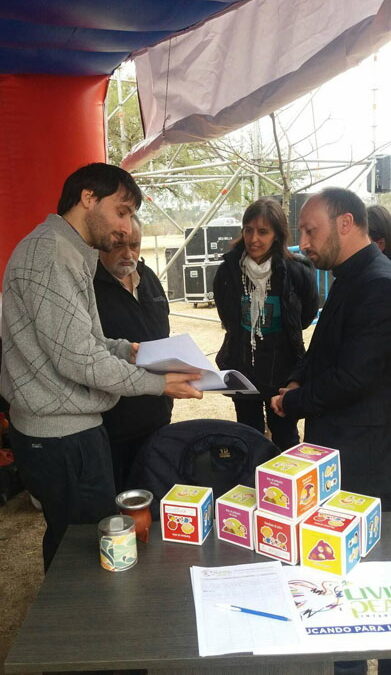
7 Sep 2017 | Focolare Worldwide
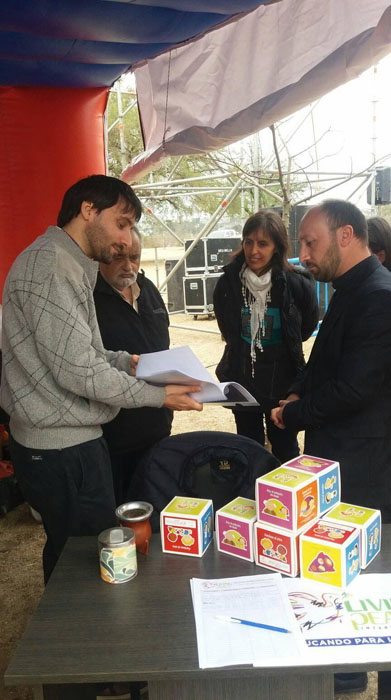 The Park of the Nations in Córdoba, Argentina, is always filled with children and teenagers on the “Día del Niño” (Day of the Child), which is celebrated on the third Sunday of August. The Park is the perfect place to hold games, tournaments and take walks. This year a festive crowd drew the attention of the passers-by, with the unveiling of a particularly meaningful monument: the Cube of Peace. There were games, obstacle courses, music and food just before the official unveiling in the presence of representatives from the Interreligious Commitee For Peace (COMIPAZ), members of the Armenian Church, the Jewish, Muslim and Evangelical communities. Fernanda Otero, Francisco Drab and Amelia Milagros López Loforte represented the Focolare community. The unveiling concluded with some words from Auxiliary Bishop Ricardo Seirutti who blessed the monument. It was to refrain from spinning the Cube. Each side displayed a sentence which, in spite of the rather playful and carefree atmosphere, were expected to be put into practice with seriousness and effort – and perhaps a bit of fatigue. The Cube proposes six actions that can be lived every day, each of them an expression of the Golden Rule,a version of which can be found in all religions: “Do to others what you would have them do to you:” Love everyone. Be the first to love. Love your enemy. Forgive. These are concrete gestures for a life that is counter current and courageous for the building of a more empathetic and supportive society. The unveiling was not an isolated event, but the result of many months of interaction and field work, duing which the Focolare youth took the Cube to several quarters in the city, as an educational tool for teaching peace through play and theatre. In neighbourhoods on the peripheries of Ciudad Evita, San Roque, Cabildo, Müller, Argüello where people live amidst violence, with their civil rights often violated and with the children of the Sierra Dorada Foundation in San Marcos Sierras, they worked side by side with local communities and organisations who are desirous of becoming more aware of local problems and taking direct action in favour of more incisive and effective social training. The project, sustained by the Focolare Movement, the organization for the defense of the rights of children and teenagers from the Province of Córdoba, the Living Peace Programme and the Interreligious Comittee for Peace, along with other organizations and public and private entities, aims to spread peace in all parts of society, beginning with a set of best practices for working with children, but valid for adults and in all environments. Similar activities are spreading in many other countries: Italy, Spain, Egypt, Hungary and Brazil where the now famous Cube has become the protagonist of a vast variety of educational projects and seminars. In Argentina, another Cube of Peace has been placed in a public area in Concepción, in the Province of Tucumán. Still in Córdoba, three days ealier, the Cube project was declared a cultural interest by the City Council. A small monument that continually comes to life.
The Park of the Nations in Córdoba, Argentina, is always filled with children and teenagers on the “Día del Niño” (Day of the Child), which is celebrated on the third Sunday of August. The Park is the perfect place to hold games, tournaments and take walks. This year a festive crowd drew the attention of the passers-by, with the unveiling of a particularly meaningful monument: the Cube of Peace. There were games, obstacle courses, music and food just before the official unveiling in the presence of representatives from the Interreligious Commitee For Peace (COMIPAZ), members of the Armenian Church, the Jewish, Muslim and Evangelical communities. Fernanda Otero, Francisco Drab and Amelia Milagros López Loforte represented the Focolare community. The unveiling concluded with some words from Auxiliary Bishop Ricardo Seirutti who blessed the monument. It was to refrain from spinning the Cube. Each side displayed a sentence which, in spite of the rather playful and carefree atmosphere, were expected to be put into practice with seriousness and effort – and perhaps a bit of fatigue. The Cube proposes six actions that can be lived every day, each of them an expression of the Golden Rule,a version of which can be found in all religions: “Do to others what you would have them do to you:” Love everyone. Be the first to love. Love your enemy. Forgive. These are concrete gestures for a life that is counter current and courageous for the building of a more empathetic and supportive society. The unveiling was not an isolated event, but the result of many months of interaction and field work, duing which the Focolare youth took the Cube to several quarters in the city, as an educational tool for teaching peace through play and theatre. In neighbourhoods on the peripheries of Ciudad Evita, San Roque, Cabildo, Müller, Argüello where people live amidst violence, with their civil rights often violated and with the children of the Sierra Dorada Foundation in San Marcos Sierras, they worked side by side with local communities and organisations who are desirous of becoming more aware of local problems and taking direct action in favour of more incisive and effective social training. The project, sustained by the Focolare Movement, the organization for the defense of the rights of children and teenagers from the Province of Córdoba, the Living Peace Programme and the Interreligious Comittee for Peace, along with other organizations and public and private entities, aims to spread peace in all parts of society, beginning with a set of best practices for working with children, but valid for adults and in all environments. Similar activities are spreading in many other countries: Italy, Spain, Egypt, Hungary and Brazil where the now famous Cube has become the protagonist of a vast variety of educational projects and seminars. In Argentina, another Cube of Peace has been placed in a public area in Concepción, in the Province of Tucumán. Still in Córdoba, three days ealier, the Cube project was declared a cultural interest by the City Council. A small monument that continually comes to life.
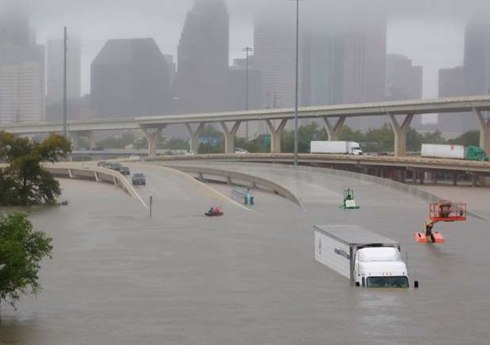
5 Sep 2017 | Focolare Worldwide
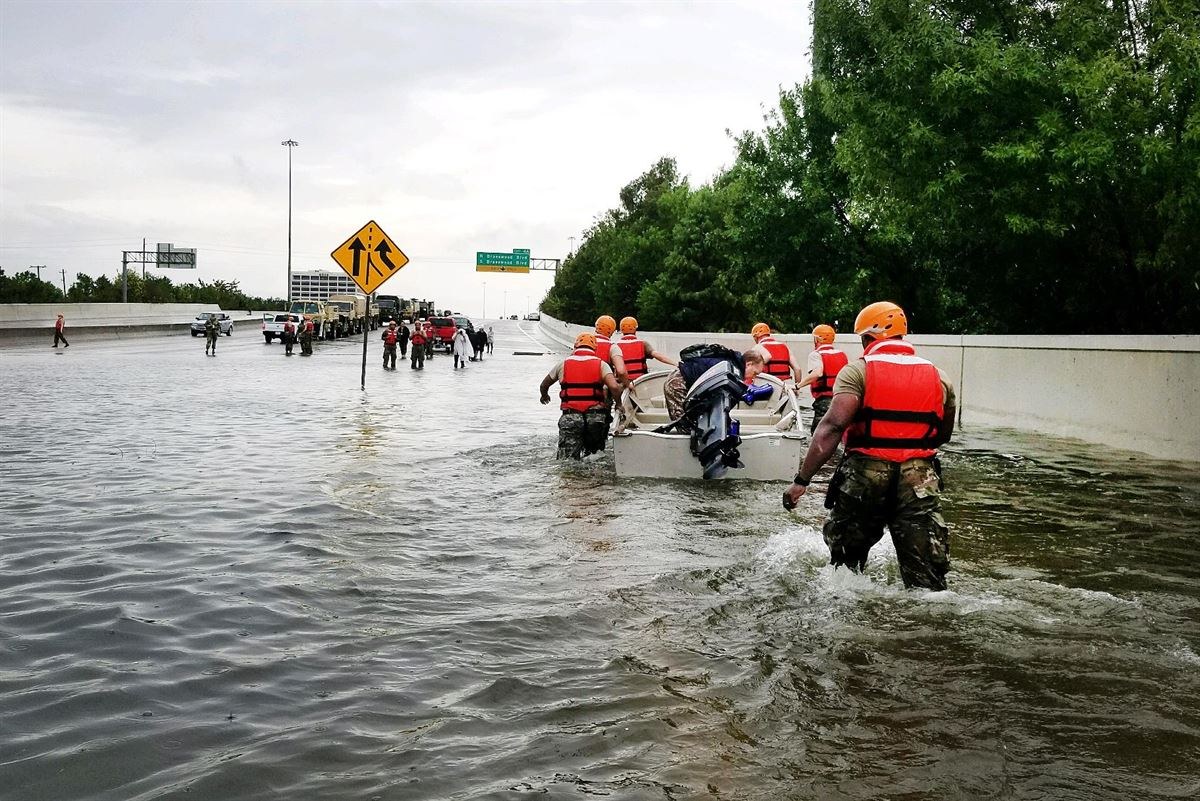 As Harvey’s fury fades and tears are shed for victims whose numbers are growing by the hour, the devastation left behind by the hurricane and the growing concern over contaminated water, especially in Houston, is becoming clearer and clearer within the city which is home to hundreds of large and important chemical and oil plants There is already a mixture of pesticides, waste and solvents that can do further damage to humans and the environment even after Harvey. Last September 1st there was a choral outcry for more attention and care for Creation just as Texas was emerging from the receding flood waters. It is not only the uncontrollable forces of nature that give us pause, but also our responsibility in using the goods of the earth. With regard to the risk of contamination: it has been estimated that the millions of people from Texas’s 38 counties that have been affected by Hurricane Harvey use private water sources that are not subjected to the same controls as public water systems and are at risk of contamination. “
As Harvey’s fury fades and tears are shed for victims whose numbers are growing by the hour, the devastation left behind by the hurricane and the growing concern over contaminated water, especially in Houston, is becoming clearer and clearer within the city which is home to hundreds of large and important chemical and oil plants There is already a mixture of pesticides, waste and solvents that can do further damage to humans and the environment even after Harvey. Last September 1st there was a choral outcry for more attention and care for Creation just as Texas was emerging from the receding flood waters. It is not only the uncontrollable forces of nature that give us pause, but also our responsibility in using the goods of the earth. With regard to the risk of contamination: it has been estimated that the millions of people from Texas’s 38 counties that have been affected by Hurricane Harvey use private water sources that are not subjected to the same controls as public water systems and are at risk of contamination. “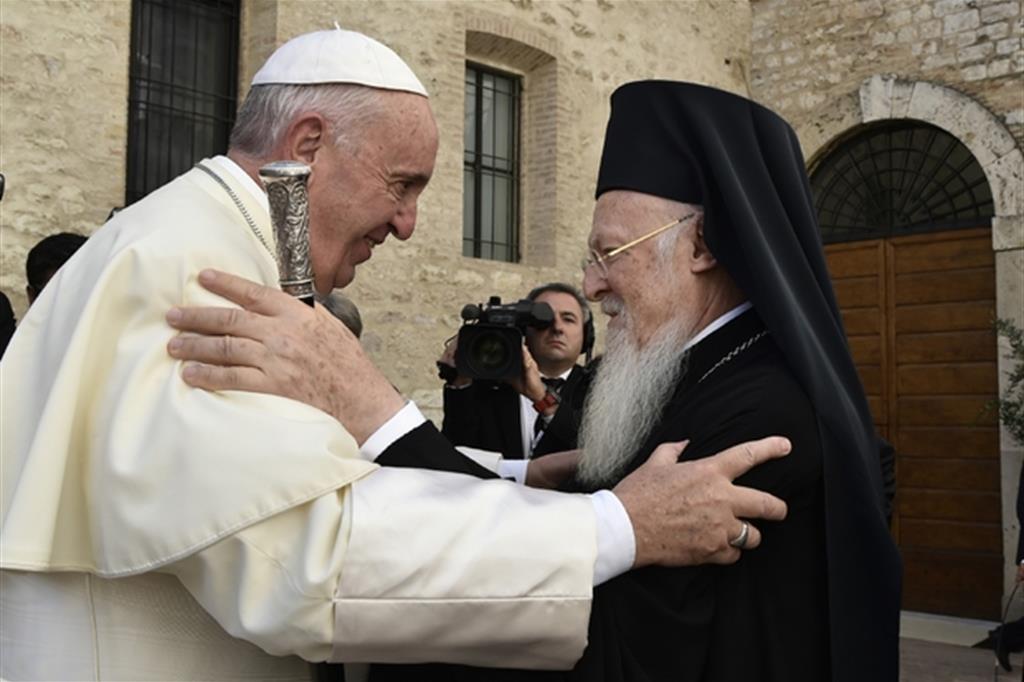 It is time to think about the tremendous power of nature and of human responsibility to be good and wise administrators of the environment,” writes Ecumenical Patriarch Bartholomew, known for his involvement in promoting care for the environment. “We are all called to to take part in the redemption and care of our world, working to stem the destructive force of such hurricanes through better environmental planning, or by being more seriously involved in combatting the serious problem of climate change and the way in which it interferes with our planet; or even to beomc personally involved on the field, with charitable projects that can help and support those whose lives are so drastically changed in the bat of an eye because of changes in the climate. In their joint statement on the Day of Prayer for Creation, Pope Francis and Patriarch Bartholomew stated: We urgently appeal to those in positions of social and economic, as well as political and cultural, responsibility to hear the cry of the earth and to attend to the needs of the marginalized, but above all to respond to the plea of millions and support the consensus of the world for the healing of our wounded creation. We are convinced that there can be no sincere and enduring resolution to the challenge of the ecological crisis and climate change unless the response is concerted and collective, unless the responsibility is shared and accountable, unless we give priority to solidarity and service.
It is time to think about the tremendous power of nature and of human responsibility to be good and wise administrators of the environment,” writes Ecumenical Patriarch Bartholomew, known for his involvement in promoting care for the environment. “We are all called to to take part in the redemption and care of our world, working to stem the destructive force of such hurricanes through better environmental planning, or by being more seriously involved in combatting the serious problem of climate change and the way in which it interferes with our planet; or even to beomc personally involved on the field, with charitable projects that can help and support those whose lives are so drastically changed in the bat of an eye because of changes in the climate. In their joint statement on the Day of Prayer for Creation, Pope Francis and Patriarch Bartholomew stated: We urgently appeal to those in positions of social and economic, as well as political and cultural, responsibility to hear the cry of the earth and to attend to the needs of the marginalized, but above all to respond to the plea of millions and support the consensus of the world for the healing of our wounded creation. We are convinced that there can be no sincere and enduring resolution to the challenge of the ecological crisis and climate change unless the response is concerted and collective, unless the responsibility is shared and accountable, unless we give priority to solidarity and service.  Meanwhile, news has arrived from the Focolare community in Houston. Joelma, Carmina and Chiara and Kate write: “Thanks for your prayers, your closeness and your many meassages that have been arriving. Everyone in our community is safe. Some had to evacuate their homes, and others had their homes flooded, but weren’t forced to leave them. The neighbourhood where the focolare house is located was on high enough land to stay dry, but it’s like an island because all the land around it is flooded. It was hard to watch all the flooding from a house that was dry and secure, knowing that the lives of many of the people around us were in danger. Unfortunately, we just learned that the relatives of several people from our community in Corpus Christi, the first Texan city to be hit by the hurricane’s fury, were killed as the six of them tried to escape the flood waters. We’re trying to understand the best way to help right now, also because it’s still very dangerous to be out driving. Two nurses from the local community, Marga and Augie, are working around the clock at their hospital due to the shortage of staff. One young person was able to travel around and reach other volunteers, and a couple with a canoe was able to give a hand rowing through neighbourhoods.
Meanwhile, news has arrived from the Focolare community in Houston. Joelma, Carmina and Chiara and Kate write: “Thanks for your prayers, your closeness and your many meassages that have been arriving. Everyone in our community is safe. Some had to evacuate their homes, and others had their homes flooded, but weren’t forced to leave them. The neighbourhood where the focolare house is located was on high enough land to stay dry, but it’s like an island because all the land around it is flooded. It was hard to watch all the flooding from a house that was dry and secure, knowing that the lives of many of the people around us were in danger. Unfortunately, we just learned that the relatives of several people from our community in Corpus Christi, the first Texan city to be hit by the hurricane’s fury, were killed as the six of them tried to escape the flood waters. We’re trying to understand the best way to help right now, also because it’s still very dangerous to be out driving. Two nurses from the local community, Marga and Augie, are working around the clock at their hospital due to the shortage of staff. One young person was able to travel around and reach other volunteers, and a couple with a canoe was able to give a hand rowing through neighbourhoods.
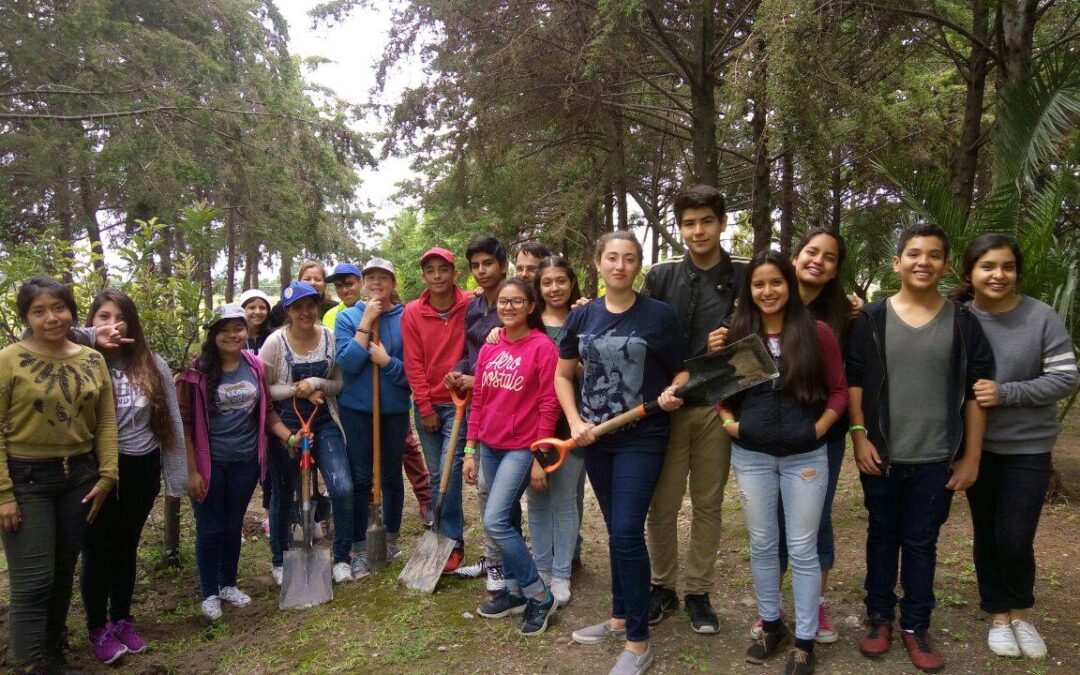
1 Sep 2017 | Focolare Worldwide, Senza categoria
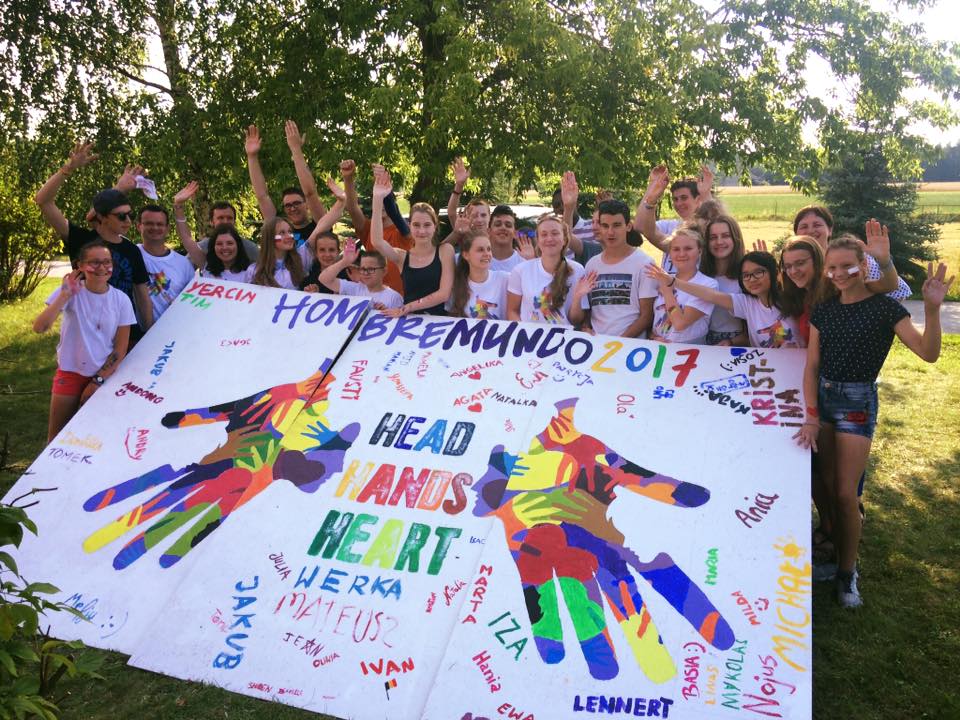 From Central and South America, to Europe, Afica and Middle East, fifty laboratories for forming people who are open, inclusive, world citizens who wish to offer the wealth of their own cultures while being open to that of others. Every three years the Focolare’s Teens for Unity hold a series of international workshops in which they can be formed in a culture of fraternity as the antidote to division, intolerance and hate. Each workshop had two phases. The first phase consisted in learning to know and respect the other’s culture as one’s own. The second, to take concrete action, especially in the most needy peripheries with the most disadvantaged people: the homeless, orphans, immigrants and Rom. In Lithuania, the teenagers of the workshops – which included groups from Switzerland – visited a hospital for the disabled and mentally ill where they managed to engage a girl who was usually unresponsive to any kind of stimulation. In the small European state of Škofia Loka, Slovenia, their goal was to engage the homeless. In Bratisslava, German and Slovak teenagers volunteered to clean the shores of the Danube, where they collected six tons of trash. There were also concerts, flashmobs, and folk festivals on several public squares of Eastern Europe which caught the curiosity and intererst of the media. Several teenagers were interviewed on national television at Mariapolis Faro. The Mariapolis in Croatia was turned into an international microcosm with 280 teenagers from 22 nations, and twelve translations for teenagers from such places as Palestine, Israel, Lebanon, Jordan, Syria and Venezuela. “When I talked with the guys from Venezuela,” says a girl from the Holy Land, “I found out that there are problems in every country. We’re at war, but at least we have food to eat. In Venezuela, they don’t even have any. So, I brought a basket and suggested that we put what we had in common.” Another teenager: “From now on, when someone asks me how many brothers and sisters I have, I’ll say 280!” “A group of girls arriving from the United State lost their luggage at the airport. The luggage was located and returned to them a few days later. In the meantime – used as they were to always having everything they needed – they experienced what it’s like to depend on the love (and clothing) of others. In Serbia, the workshop opened in Cardak, an hour drive from Belgrade. The teenagers were hosted at a state institute, in a wooded area where hundreds of refugees had recently passed from the Balkans: a simbol of beauty and suffering in the tormented march toward the unity of peoples, Churches and religions. They also experienced the diversity of religions – many of them Christian and Muslim – and of different traditions – among them Catholic, Orthodox, Lutheran, Evangelical and Anglican. Some didn’t confess any particular creed, but everyone felt perfectly integrated.
From Central and South America, to Europe, Afica and Middle East, fifty laboratories for forming people who are open, inclusive, world citizens who wish to offer the wealth of their own cultures while being open to that of others. Every three years the Focolare’s Teens for Unity hold a series of international workshops in which they can be formed in a culture of fraternity as the antidote to division, intolerance and hate. Each workshop had two phases. The first phase consisted in learning to know and respect the other’s culture as one’s own. The second, to take concrete action, especially in the most needy peripheries with the most disadvantaged people: the homeless, orphans, immigrants and Rom. In Lithuania, the teenagers of the workshops – which included groups from Switzerland – visited a hospital for the disabled and mentally ill where they managed to engage a girl who was usually unresponsive to any kind of stimulation. In the small European state of Škofia Loka, Slovenia, their goal was to engage the homeless. In Bratisslava, German and Slovak teenagers volunteered to clean the shores of the Danube, where they collected six tons of trash. There were also concerts, flashmobs, and folk festivals on several public squares of Eastern Europe which caught the curiosity and intererst of the media. Several teenagers were interviewed on national television at Mariapolis Faro. The Mariapolis in Croatia was turned into an international microcosm with 280 teenagers from 22 nations, and twelve translations for teenagers from such places as Palestine, Israel, Lebanon, Jordan, Syria and Venezuela. “When I talked with the guys from Venezuela,” says a girl from the Holy Land, “I found out that there are problems in every country. We’re at war, but at least we have food to eat. In Venezuela, they don’t even have any. So, I brought a basket and suggested that we put what we had in common.” Another teenager: “From now on, when someone asks me how many brothers and sisters I have, I’ll say 280!” “A group of girls arriving from the United State lost their luggage at the airport. The luggage was located and returned to them a few days later. In the meantime – used as they were to always having everything they needed – they experienced what it’s like to depend on the love (and clothing) of others. In Serbia, the workshop opened in Cardak, an hour drive from Belgrade. The teenagers were hosted at a state institute, in a wooded area where hundreds of refugees had recently passed from the Balkans: a simbol of beauty and suffering in the tormented march toward the unity of peoples, Churches and religions. They also experienced the diversity of religions – many of them Christian and Muslim – and of different traditions – among them Catholic, Orthodox, Lutheran, Evangelical and Anglican. Some didn’t confess any particular creed, but everyone felt perfectly integrated. 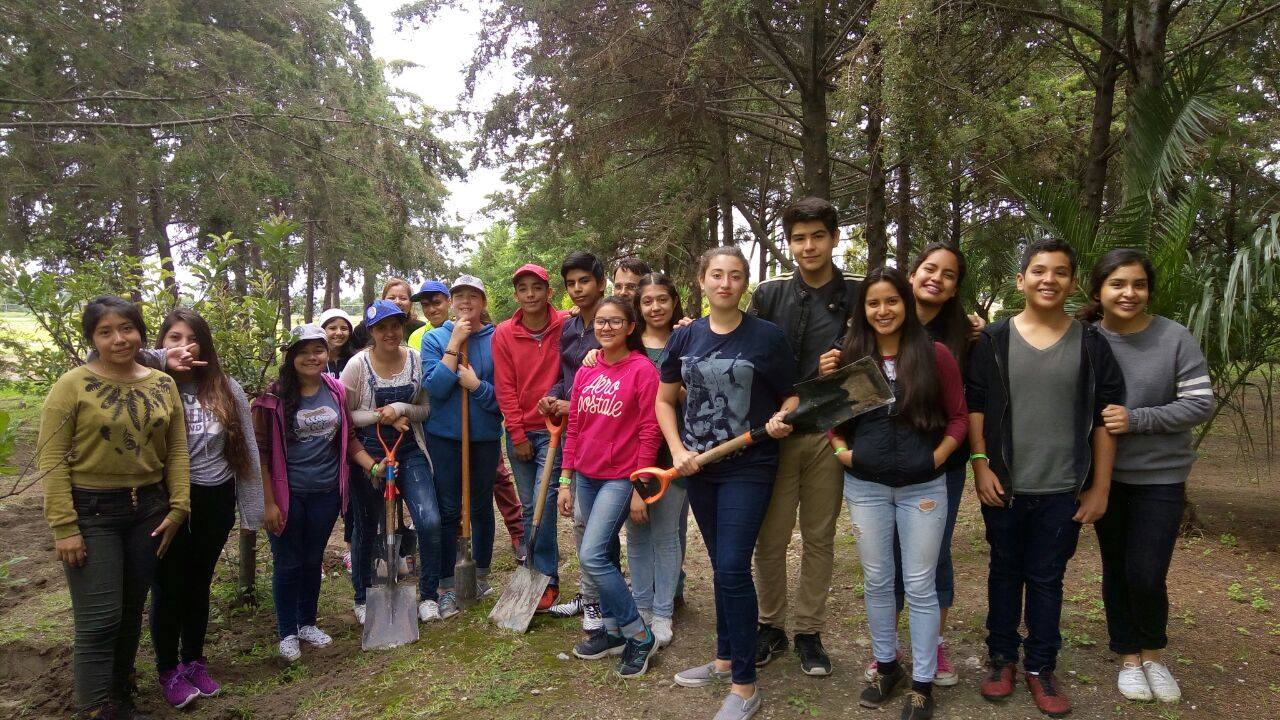 At Paztún, in the Maya Kapchikel region of Guatamala, the workshop from Central America gathered 160 teenagers from Panama, Costa Rica, Honduras, El Salvador and Guatamala, along with some teenagers from the Quiché ethnic group in Santa Lucia Utatlán. The indiscriminate chopping down of entire forests – a real wound to the land – urged them to plant on a stretch of public land, thousands of fur trees that were donated by the state.In the Southern Cone, Global Citizen took on the color of social action with projects that favored knowing one another and valuing the richness of the South American people. In the workshop at Cunaco. Educational and recreational workshops were held in Chile, along with solidarity projects. In Paraguay there were seminars, visits to Guaraní communities of Ita and a day with the teenagers from Barrio Vida, a social centre animated by the Focolare periphery of Motevideo. It included activities for children, workshops, sport tournaments and games for the public. In Argentina they shared in the life of their peers from the Island of Margherita, in the region of the Tigre, north of Buenos Aires on the Rio de la Plata.
At Paztún, in the Maya Kapchikel region of Guatamala, the workshop from Central America gathered 160 teenagers from Panama, Costa Rica, Honduras, El Salvador and Guatamala, along with some teenagers from the Quiché ethnic group in Santa Lucia Utatlán. The indiscriminate chopping down of entire forests – a real wound to the land – urged them to plant on a stretch of public land, thousands of fur trees that were donated by the state.In the Southern Cone, Global Citizen took on the color of social action with projects that favored knowing one another and valuing the richness of the South American people. In the workshop at Cunaco. Educational and recreational workshops were held in Chile, along with solidarity projects. In Paraguay there were seminars, visits to Guaraní communities of Ita and a day with the teenagers from Barrio Vida, a social centre animated by the Focolare periphery of Motevideo. It included activities for children, workshops, sport tournaments and games for the public. In Argentina they shared in the life of their peers from the Island of Margherita, in the region of the Tigre, north of Buenos Aires on the Rio de la Plata.
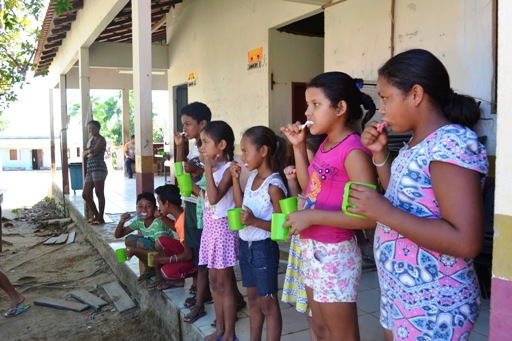
31 Aug 2017 | Focolare Worldwide
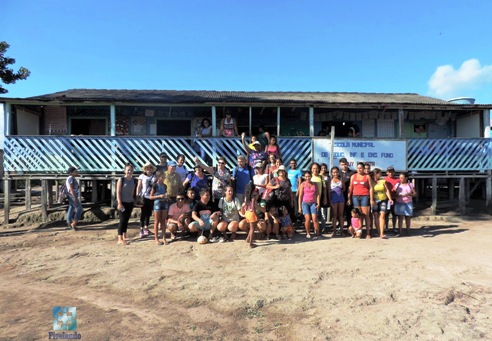 Óbidos, on the left bank of the Amazon River, about 682 miles from the capital, Belem, is a city of almost 50,000 inhabitants. There is only one hospital, which is run by the Third Order of St. Francis and absolutely insufficient to assist the most serious cases. After an appeal of the Brazilian Conference of Bishops, for some years now a big group of doctors, nurses and common people, have undertaken journeys to bring healthcare and support to the population, especially in the river communities. The Amazon Project is now known to many. Upon reaching Óbidos in July, the “missionaries” of this year consisting of about 40 people from various parts of Brazil, gathered during the recent Run4Unity of Belém, and enjoyed the cooperation and hospitality of the local families. Preparations for this event took several months, and dispatches were made – by air and river – of 15 big boxes of medicine, dentistry material and toys. The Mayor hosted four participants, placed at the disposal of the missionaries, a boat and a coach which was used to visit the communities in the interior of the “ribeirinhas” (three communities that never receive medical care and rarely go to the city), and paid for the services of a cook during their stay. The first community encountered were the 2,000 people living in an area next to a “lixão” (dumpsite). The group stayed there for three days. Much more than the figures (8 days, 611 medical checkups and 221 dental checkups) the remarks of the protagonists, doctors and local people stand out. A woman who was treated for a strong headache, returned after a few days to breathe that atmosphere which she described as “the air of paradise.” At the end of the “treatment” her headache had almost disappeared. Eliane comes from São Paulo: “Before coming here, I gathered information on the internet. But here, things are a completely different thing, a lesson I shall remember all my life. After the trauma I underwent – referring to the recent death of her husband – I thought I would remain indifferent to any other pain. Instead, I now am full of ideas and a great desire to help!”
Óbidos, on the left bank of the Amazon River, about 682 miles from the capital, Belem, is a city of almost 50,000 inhabitants. There is only one hospital, which is run by the Third Order of St. Francis and absolutely insufficient to assist the most serious cases. After an appeal of the Brazilian Conference of Bishops, for some years now a big group of doctors, nurses and common people, have undertaken journeys to bring healthcare and support to the population, especially in the river communities. The Amazon Project is now known to many. Upon reaching Óbidos in July, the “missionaries” of this year consisting of about 40 people from various parts of Brazil, gathered during the recent Run4Unity of Belém, and enjoyed the cooperation and hospitality of the local families. Preparations for this event took several months, and dispatches were made – by air and river – of 15 big boxes of medicine, dentistry material and toys. The Mayor hosted four participants, placed at the disposal of the missionaries, a boat and a coach which was used to visit the communities in the interior of the “ribeirinhas” (three communities that never receive medical care and rarely go to the city), and paid for the services of a cook during their stay. The first community encountered were the 2,000 people living in an area next to a “lixão” (dumpsite). The group stayed there for three days. Much more than the figures (8 days, 611 medical checkups and 221 dental checkups) the remarks of the protagonists, doctors and local people stand out. A woman who was treated for a strong headache, returned after a few days to breathe that atmosphere which she described as “the air of paradise.” At the end of the “treatment” her headache had almost disappeared. Eliane comes from São Paulo: “Before coming here, I gathered information on the internet. But here, things are a completely different thing, a lesson I shall remember all my life. After the trauma I underwent – referring to the recent death of her husband – I thought I would remain indifferent to any other pain. Instead, I now am full of ideas and a great desire to help!”  Tiago, a youth from Óbidos is participating for the second time in the Project. Since he couldn’t buy a pair of eyeglasses, a collection was made: “Seeing so much generosity made me want to do something myself!” Ana Carla (doctor): “I realised that our reality is not the worst one! Upon listening to some mothers that their son had never been visited by a doctor made me think: I may not be able to solve the problem, but I can love, listen, give comfort, or a drug. This is already something. I don’t feel tired, but my weariness lies in having to ask: “What does your child eat?” and hear them answer: “flour.” Amanda is studying medicine: “I now see medicine with another vision: in front of me is the sick person and not only his illness. We cannot be satisfied only by prescribing a drug, we have to treat the person.” Ereh is a boy from Óbidos: “It is difficult to live in this situation. Mateus and I do volunteer work with children.” Solange (Belém): “When I heard about the Project, I was very interested and I asked my family’s permission to participate. I only received criticisms, but when I got here, I found a family environment which I didn’t expect. I was surprised to see the youths who, in the month of July, give up their holidays.” Also Marcos is a student of medicine: “I found myself in the impossibility of resolving serious situations, since I didn’t have the means to cure them, but only give relief. We must have the courage to make a hands-on experience and help the youths who have turned to stone in their city. Drug addiction is not the only vice, but there are others: remaining closed up in ourselves, in one’s own ego.” Victor (Santarém): “in the name of the entire Amazon, I thank you all who have left your zones to come to our peripheries.” The Project now proceeds with the diffusion and gathering of useful material and finances, so that more can be done next year.
Tiago, a youth from Óbidos is participating for the second time in the Project. Since he couldn’t buy a pair of eyeglasses, a collection was made: “Seeing so much generosity made me want to do something myself!” Ana Carla (doctor): “I realised that our reality is not the worst one! Upon listening to some mothers that their son had never been visited by a doctor made me think: I may not be able to solve the problem, but I can love, listen, give comfort, or a drug. This is already something. I don’t feel tired, but my weariness lies in having to ask: “What does your child eat?” and hear them answer: “flour.” Amanda is studying medicine: “I now see medicine with another vision: in front of me is the sick person and not only his illness. We cannot be satisfied only by prescribing a drug, we have to treat the person.” Ereh is a boy from Óbidos: “It is difficult to live in this situation. Mateus and I do volunteer work with children.” Solange (Belém): “When I heard about the Project, I was very interested and I asked my family’s permission to participate. I only received criticisms, but when I got here, I found a family environment which I didn’t expect. I was surprised to see the youths who, in the month of July, give up their holidays.” Also Marcos is a student of medicine: “I found myself in the impossibility of resolving serious situations, since I didn’t have the means to cure them, but only give relief. We must have the courage to make a hands-on experience and help the youths who have turned to stone in their city. Drug addiction is not the only vice, but there are others: remaining closed up in ourselves, in one’s own ego.” Victor (Santarém): “in the name of the entire Amazon, I thank you all who have left your zones to come to our peripheries.” The Project now proceeds with the diffusion and gathering of useful material and finances, so that more can be done next year.
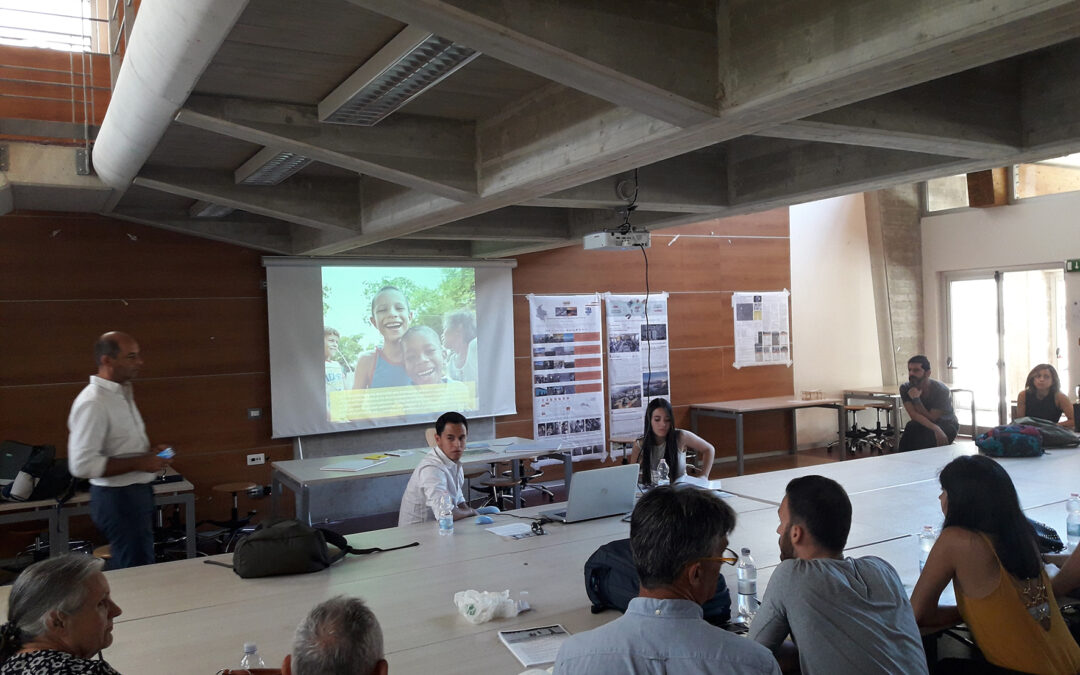
30 Aug 2017 | Focolare Worldwide, Senza categoria
 To inhabit a place in just two weeks, a place that is geographically and culturally far away from your home. This was the challenge of Habitandando: to build new bridges between, and on the other hand, a young and contrasted people, whose richness and inequalities are reflected also in its territory – made of megalopolises and immense regions. However, how do you build a bridge between Italy and Colombia in just fifteen days? How can you get to inhabit a place, to become familiar with it as if it were your home? Travel as a method therefore: to get to know a place by experiencing it, using as a testing ground for generating new and challenging ideas. And even this year, the experiences were the most diverse: crossing Central Italy by car, to distinguish how landscapes change from the coast to the mountains; living at Piazza del Campo in Siena, to observe how a public space has been functioning perfectly for centuries; walking for many hours around the centre of Rome, to distinguish each epoch in the thousand layers composing the city; exploring Tor Bella Monaca, a neighbourhood in the Roman periphery where failed architecture projects add up to a fragile social condition.
To inhabit a place in just two weeks, a place that is geographically and culturally far away from your home. This was the challenge of Habitandando: to build new bridges between, and on the other hand, a young and contrasted people, whose richness and inequalities are reflected also in its territory – made of megalopolises and immense regions. However, how do you build a bridge between Italy and Colombia in just fifteen days? How can you get to inhabit a place, to become familiar with it as if it were your home? Travel as a method therefore: to get to know a place by experiencing it, using as a testing ground for generating new and challenging ideas. And even this year, the experiences were the most diverse: crossing Central Italy by car, to distinguish how landscapes change from the coast to the mountains; living at Piazza del Campo in Siena, to observe how a public space has been functioning perfectly for centuries; walking for many hours around the centre of Rome, to distinguish each epoch in the thousand layers composing the city; exploring Tor Bella Monaca, a neighbourhood in the Roman periphery where failed architecture projects add up to a fragile social condition.  The travel is the method and the territory is the classroom. Each stage of the travel was devoted to a specific issue: for example, the Tuscany countryside explains territory and landscape, the Amalfi Coast shows both the antique and the modern, the towns hit by earthquakes in Central Italy show the relationship between memory and catastrophe. Having the territory as classroom allows first-hand observation of each issue, but is it’s not simply a way of going beyond the simplistic explanations by tourist guides and school textbooks. Rather, it is an occasion to incrementally build by yourself the knowledge on a given place. In fact, the participants were asked to focus on each place that they visited by writing pieces for different audiences, taking photographs with different communicative aims, developing their own explanations on specific settings and phenomena. Day by day, the first ingenuous reactions leave space to deeper reasonings. Maybe Tor Bella Monaca, the neighbourhood in the Roman periphery, provides the most interesting example: the initial skepticism (“Is this a poor and degraded neighbourhood? If only all poor places in Colombia were like this!”) is replaced by all the new ideas that it can generate. The participants’ disorientated looks of the first days were gradually replaced by more relaxed ones, once a relationship was established with the visited places and also the challenges facing them. The tension between memory and innovation were the guiding thread behind this year’s initiative, and this emerged also from the comments made at the end of the travel. For a Colombian student, Italy carries with her centuries of history but does not know how to manage such heritage, does not understand how nowadays heritage can interact with the demands of the habitat. These reflections were developed in the last days of the travel, spent in Montefalcone Appennino, It was the beginning of a think-tank which can yield varying results, but which already demonstrates what can be achieved through a new way of studying the habitat, by going out of the classrooms into the territory, inhabiting it on the move so to speak: to inhabit a place is not just to know it, but also to start imagining it differently from what it is right now. Compiled by Dialogue in Architecture
The travel is the method and the territory is the classroom. Each stage of the travel was devoted to a specific issue: for example, the Tuscany countryside explains territory and landscape, the Amalfi Coast shows both the antique and the modern, the towns hit by earthquakes in Central Italy show the relationship between memory and catastrophe. Having the territory as classroom allows first-hand observation of each issue, but is it’s not simply a way of going beyond the simplistic explanations by tourist guides and school textbooks. Rather, it is an occasion to incrementally build by yourself the knowledge on a given place. In fact, the participants were asked to focus on each place that they visited by writing pieces for different audiences, taking photographs with different communicative aims, developing their own explanations on specific settings and phenomena. Day by day, the first ingenuous reactions leave space to deeper reasonings. Maybe Tor Bella Monaca, the neighbourhood in the Roman periphery, provides the most interesting example: the initial skepticism (“Is this a poor and degraded neighbourhood? If only all poor places in Colombia were like this!”) is replaced by all the new ideas that it can generate. The participants’ disorientated looks of the first days were gradually replaced by more relaxed ones, once a relationship was established with the visited places and also the challenges facing them. The tension between memory and innovation were the guiding thread behind this year’s initiative, and this emerged also from the comments made at the end of the travel. For a Colombian student, Italy carries with her centuries of history but does not know how to manage such heritage, does not understand how nowadays heritage can interact with the demands of the habitat. These reflections were developed in the last days of the travel, spent in Montefalcone Appennino, It was the beginning of a think-tank which can yield varying results, but which already demonstrates what can be achieved through a new way of studying the habitat, by going out of the classrooms into the territory, inhabiting it on the move so to speak: to inhabit a place is not just to know it, but also to start imagining it differently from what it is right now. Compiled by Dialogue in Architecture
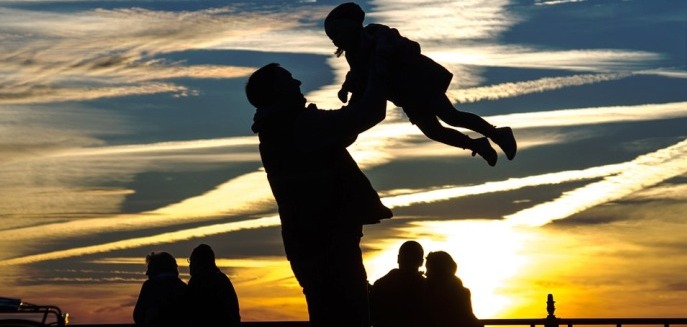
29 Aug 2017 | Focolare Worldwide
 New flowering “As Christians, my wife and I decided to adopt two sisters. Unfortunately, due to bad company, both have ended up in the drug cycle. Since then, a Calvary began for us: abortions, undesired children, problems with the law. We undertook to make our home a place of peace where they are welcomed. Now, the elder one is slowly recovering and not only wants to take care of her baby girl but also the son of her sister who is still in the drug tunnel. We are witnessing life blooming again.” (M and D. H. – Switzerland) An innocent absolved «I am a lawyer by profession. Some months ago I took the defence of a Sudanese citizen accused of being a transporter of immigrants and even a member of a criminal organization. He was seen at the helm of a boat that was transporting 119 migrants, among which were women and children. In the interviews held with him in jail, I realized that he was a refugee like the others, and had been abandoned by the transporter, and had taken the courage to take the helm of the boat despite his lack of experience, to save himself along with the others. Unfortunately they did not believe his recount. On taking the defence of this youth’s suffering, I decided to demonstrate his innocence despite the fact that, due to his poverty, he couldn’t have paid my fees. Of course, I could have made use of the sponsorship of the State, which however, does not always pay and if ever, the payments are inadequate. But he was a brother, and during the trial I did my best to defend him. In the end, he was absolved.” (S. – Italy) The “agreement” «As always, dad had drunk more than necessary and there was tension at home. Since nobody said a word, I took the courage, and looking him straight in the eye, told him of the suffering and dismay he was causing us due to his vice. Then also the other brothers spoke up. Things then changed and in the family a sort of agreement was made and now dad is doing his best to be faithful to his promise not to drink. Closing our eyes had not been a way of helping him, and we had to tell him the truth, with love. And together we succeeded.” (N.N. – South America) A son’s gratitude «As time passes my gratitude towards my mom grows. After dad had abandoned us, she had continued to work hard so that we, the four children, wouldn’t lack in anything. One day she went to the funeral of her brother-in-law and returned with an eight-month-old baby in her arms. Her sister was not in the condition to care for him. This was how we were raised. I think that the goodness which now reigns in our families is a fruit of the grandeur of my mother, who did not think of herself, but always of the others.” (C. A. – Poland)
New flowering “As Christians, my wife and I decided to adopt two sisters. Unfortunately, due to bad company, both have ended up in the drug cycle. Since then, a Calvary began for us: abortions, undesired children, problems with the law. We undertook to make our home a place of peace where they are welcomed. Now, the elder one is slowly recovering and not only wants to take care of her baby girl but also the son of her sister who is still in the drug tunnel. We are witnessing life blooming again.” (M and D. H. – Switzerland) An innocent absolved «I am a lawyer by profession. Some months ago I took the defence of a Sudanese citizen accused of being a transporter of immigrants and even a member of a criminal organization. He was seen at the helm of a boat that was transporting 119 migrants, among which were women and children. In the interviews held with him in jail, I realized that he was a refugee like the others, and had been abandoned by the transporter, and had taken the courage to take the helm of the boat despite his lack of experience, to save himself along with the others. Unfortunately they did not believe his recount. On taking the defence of this youth’s suffering, I decided to demonstrate his innocence despite the fact that, due to his poverty, he couldn’t have paid my fees. Of course, I could have made use of the sponsorship of the State, which however, does not always pay and if ever, the payments are inadequate. But he was a brother, and during the trial I did my best to defend him. In the end, he was absolved.” (S. – Italy) The “agreement” «As always, dad had drunk more than necessary and there was tension at home. Since nobody said a word, I took the courage, and looking him straight in the eye, told him of the suffering and dismay he was causing us due to his vice. Then also the other brothers spoke up. Things then changed and in the family a sort of agreement was made and now dad is doing his best to be faithful to his promise not to drink. Closing our eyes had not been a way of helping him, and we had to tell him the truth, with love. And together we succeeded.” (N.N. – South America) A son’s gratitude «As time passes my gratitude towards my mom grows. After dad had abandoned us, she had continued to work hard so that we, the four children, wouldn’t lack in anything. One day she went to the funeral of her brother-in-law and returned with an eight-month-old baby in her arms. Her sister was not in the condition to care for him. This was how we were raised. I think that the goodness which now reigns in our families is a fruit of the grandeur of my mother, who did not think of herself, but always of the others.” (C. A. – Poland)

 The Park of the Nations in Córdoba, Argentina, is always filled with children and teenagers on the “Día del Niño” (Day of the Child), which is celebrated on the third Sunday of August. The Park is the perfect place to hold games, tournaments and take walks. This year a festive crowd drew the attention of the passers-by, with the unveiling of a particularly meaningful monument: the Cube of Peace. There were games, obstacle courses, music and food just before the official unveiling in the presence of representatives from the Interreligious Commitee For Peace (COMIPAZ), members of the Armenian Church, the Jewish, Muslim and Evangelical communities. Fernanda Otero, Francisco Drab and Amelia Milagros López Loforte represented the Focolare community. The unveiling concluded with some words from Auxiliary Bishop Ricardo Seirutti who blessed the monument. It was to refrain from spinning the Cube. Each side displayed a sentence which, in spite of the rather playful and carefree atmosphere, were expected to be put into practice with seriousness and effort – and perhaps a bit of fatigue. The Cube proposes six actions that can be lived every day, each of them an expression of the Golden Rule,a version of which can be found in all religions: “Do to others what you would have them do to you:” Love everyone. Be the first to love. Love your enemy. Forgive. These are concrete gestures for a life that is counter current and courageous for the building of a more empathetic and supportive society. The unveiling was not an isolated event, but the result of many months of interaction and field work, duing which the Focolare youth took the Cube to several quarters in the city, as an educational tool for teaching peace through play and theatre. In neighbourhoods on the peripheries of Ciudad Evita, San Roque, Cabildo, Müller, Argüello where people live amidst violence, with their civil rights often violated and with the children of the Sierra Dorada Foundation in San Marcos Sierras, they worked side by side with local communities and organisations who are desirous of becoming more aware of local problems and taking direct action in favour of more incisive and effective social training. The project, sustained by the Focolare Movement, the organization for the defense of the rights of children and teenagers from the Province of Córdoba, the Living Peace Programme and the Interreligious Comittee for Peace, along with other organizations and public and private entities, aims to spread peace in all parts of society, beginning with a set of best practices for working with children, but valid for adults and in all environments. Similar activities are spreading in many other countries: Italy, Spain, Egypt, Hungary and Brazil where the now famous Cube has become the protagonist of a vast variety of educational projects and seminars. In Argentina, another Cube of Peace has been placed in a public area in Concepción, in the Province of Tucumán. Still in Córdoba, three days ealier, the Cube project was declared a cultural interest by the City Council. A small monument that continually comes to life.
The Park of the Nations in Córdoba, Argentina, is always filled with children and teenagers on the “Día del Niño” (Day of the Child), which is celebrated on the third Sunday of August. The Park is the perfect place to hold games, tournaments and take walks. This year a festive crowd drew the attention of the passers-by, with the unveiling of a particularly meaningful monument: the Cube of Peace. There were games, obstacle courses, music and food just before the official unveiling in the presence of representatives from the Interreligious Commitee For Peace (COMIPAZ), members of the Armenian Church, the Jewish, Muslim and Evangelical communities. Fernanda Otero, Francisco Drab and Amelia Milagros López Loforte represented the Focolare community. The unveiling concluded with some words from Auxiliary Bishop Ricardo Seirutti who blessed the monument. It was to refrain from spinning the Cube. Each side displayed a sentence which, in spite of the rather playful and carefree atmosphere, were expected to be put into practice with seriousness and effort – and perhaps a bit of fatigue. The Cube proposes six actions that can be lived every day, each of them an expression of the Golden Rule,a version of which can be found in all religions: “Do to others what you would have them do to you:” Love everyone. Be the first to love. Love your enemy. Forgive. These are concrete gestures for a life that is counter current and courageous for the building of a more empathetic and supportive society. The unveiling was not an isolated event, but the result of many months of interaction and field work, duing which the Focolare youth took the Cube to several quarters in the city, as an educational tool for teaching peace through play and theatre. In neighbourhoods on the peripheries of Ciudad Evita, San Roque, Cabildo, Müller, Argüello where people live amidst violence, with their civil rights often violated and with the children of the Sierra Dorada Foundation in San Marcos Sierras, they worked side by side with local communities and organisations who are desirous of becoming more aware of local problems and taking direct action in favour of more incisive and effective social training. The project, sustained by the Focolare Movement, the organization for the defense of the rights of children and teenagers from the Province of Córdoba, the Living Peace Programme and the Interreligious Comittee for Peace, along with other organizations and public and private entities, aims to spread peace in all parts of society, beginning with a set of best practices for working with children, but valid for adults and in all environments. Similar activities are spreading in many other countries: Italy, Spain, Egypt, Hungary and Brazil where the now famous Cube has become the protagonist of a vast variety of educational projects and seminars. In Argentina, another Cube of Peace has been placed in a public area in Concepción, in the Province of Tucumán. Still in Córdoba, three days ealier, the Cube project was declared a cultural interest by the City Council. A small monument that continually comes to life.

 As Harvey’s fury fades and tears are shed for victims whose numbers are growing by the hour, the devastation left behind by the hurricane and the growing concern over contaminated water, especially in Houston, is becoming clearer and clearer within the city which is home to hundreds of large and important chemical and oil plants There is already a mixture of pesticides, waste and solvents that can do further damage to humans and the environment even after Harvey. Last September 1st there was a choral outcry for more attention and care for Creation just as Texas was emerging from the receding flood waters. It is not only the uncontrollable forces of nature that give us pause, but also our responsibility in using the goods of the earth. With regard to the risk of contamination: it has been estimated that the millions of people from Texas’s 38 counties that have been affected by Hurricane Harvey use private water sources that are not subjected to the same controls as public water systems and are at risk of contamination. “
As Harvey’s fury fades and tears are shed for victims whose numbers are growing by the hour, the devastation left behind by the hurricane and the growing concern over contaminated water, especially in Houston, is becoming clearer and clearer within the city which is home to hundreds of large and important chemical and oil plants There is already a mixture of pesticides, waste and solvents that can do further damage to humans and the environment even after Harvey. Last September 1st there was a choral outcry for more attention and care for Creation just as Texas was emerging from the receding flood waters. It is not only the uncontrollable forces of nature that give us pause, but also our responsibility in using the goods of the earth. With regard to the risk of contamination: it has been estimated that the millions of people from Texas’s 38 counties that have been affected by Hurricane Harvey use private water sources that are not subjected to the same controls as public water systems and are at risk of contamination. “ It is time to think about the tremendous power of nature and of human responsibility to be good and wise administrators of the environment,” writes Ecumenical Patriarch Bartholomew, known for his involvement in promoting care for the environment. “We are all called to to take part in the redemption and care of our world, working to stem the destructive force of such hurricanes through better environmental planning, or by being more seriously involved in combatting the serious problem of climate change and the way in which it interferes with our planet; or even to beomc personally involved on the field, with charitable projects that can help and support those whose lives are so drastically changed in the bat of an eye because of changes in the climate. In their joint statement on the Day of Prayer for Creation, Pope Francis and Patriarch Bartholomew stated: We urgently appeal to those in positions of social and economic, as well as political and cultural, responsibility to hear the cry of the earth and to attend to the needs of the marginalized, but above all to respond to the plea of millions and support the consensus of the world for the healing of our wounded creation. We are convinced that there can be no sincere and enduring resolution to the challenge of the ecological crisis and climate change unless the response is concerted and collective, unless the responsibility is shared and accountable, unless we give priority to solidarity and service.
It is time to think about the tremendous power of nature and of human responsibility to be good and wise administrators of the environment,” writes Ecumenical Patriarch Bartholomew, known for his involvement in promoting care for the environment. “We are all called to to take part in the redemption and care of our world, working to stem the destructive force of such hurricanes through better environmental planning, or by being more seriously involved in combatting the serious problem of climate change and the way in which it interferes with our planet; or even to beomc personally involved on the field, with charitable projects that can help and support those whose lives are so drastically changed in the bat of an eye because of changes in the climate. In their joint statement on the Day of Prayer for Creation, Pope Francis and Patriarch Bartholomew stated: We urgently appeal to those in positions of social and economic, as well as political and cultural, responsibility to hear the cry of the earth and to attend to the needs of the marginalized, but above all to respond to the plea of millions and support the consensus of the world for the healing of our wounded creation. We are convinced that there can be no sincere and enduring resolution to the challenge of the ecological crisis and climate change unless the response is concerted and collective, unless the responsibility is shared and accountable, unless we give priority to solidarity and service. 



 Óbidos, on the left bank of the Amazon River, about 682 miles from the capital, Belem, is a city of almost 50,000 inhabitants. There is only one hospital, which is run by the Third Order of St. Francis and absolutely insufficient to assist the most serious cases. After an appeal of the Brazilian Conference of Bishops, for some years now a big group of doctors, nurses and common people, have undertaken journeys to bring healthcare and support to the population, especially in the river communities. The
Óbidos, on the left bank of the Amazon River, about 682 miles from the capital, Belem, is a city of almost 50,000 inhabitants. There is only one hospital, which is run by the Third Order of St. Francis and absolutely insufficient to assist the most serious cases. After an appeal of the Brazilian Conference of Bishops, for some years now a big group of doctors, nurses and common people, have undertaken journeys to bring healthcare and support to the population, especially in the river communities. The 


